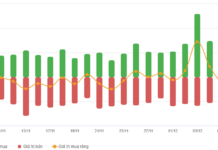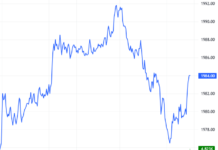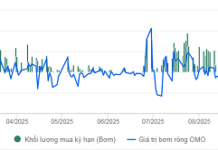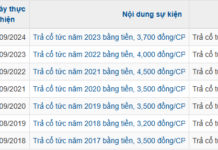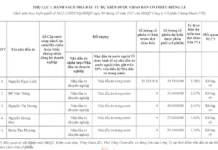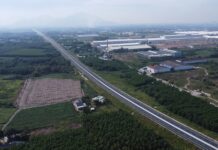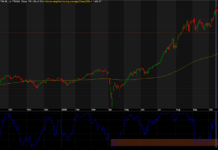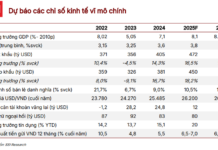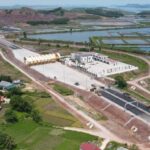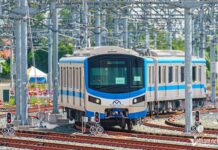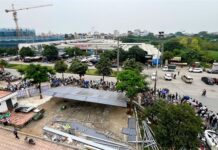As Vietnam’s Ministry of Transport expedites the construction of expressways to meet the target of 3,000 km by 2025, efforts are also being made to finalize the proposal for the North-South High-Speed Railway to commence construction as planned, heralding a breakthrough in the country’s transportation infrastructure.
In an interview with Tien Phong, a leader from the Vietnam Railway Authority shared that after meticulous research and contributions from various organizations, ministries, and international partners, the Ministry of Transport has substantially completed the proposal for the North-South high-speed rail project.
The proposed North-South high-speed railway, spanning 1,541 km, is envisioned with a double-track standard gauge of 1,435 mm, electrification, and a design speed of 350 km/h. The route will commence from the Ngoc Hoi Station in Hanoi, traversing 20 provinces and cities before concluding at the Thu Thiem Station in Ho Chi Minh City. The line will feature 23 passenger stations with an average distance of about 67 km and five freight stations linked to major cargo hubs.
The Ministry of Transport proposes concentrating resources on commencing the Hanoi-Vinh and Ho Chi Minh City-Nha Trang sections, totaling approximately 642 km, by the end of 2027. The Vinh-Nha Trang section, stretching about 899 km, is slated to begin construction before 2030, with the entire line expected to be completed by 2035.
“At this juncture, the consulting team is expediting the completion of the pre-feasibility study report. This report will be submitted to the Politburo for consideration in September, and we are striving to present it to the National Assembly for approval of the investment policy during the upcoming October session. This will enable us to arrange mid-term capital allocation for the project in 2025,” the leader of the Vietnam Railway Authority stated.

The North-South high-speed railway will span 1,541 km and pass through 20 provinces and cities. Illustrative image.
Regarding investment capital, the Vietnam Railway Authority leader disclosed that the total investment for the project is currently estimated at $67 billion, primarily sourced from public investment capital.
A study of countries with well-developed high-speed rail networks reveals that Japan decided to invest in its first high-speed rail line in 1950 when its gross domestic product (GDP) per capita was approximately $250. China made a similar move in 2005 when its GDP per capita reached $1,753, while Indonesia followed suit in 2015 with a GDP per capita of around $3,322. China boasts the world’s longest high-speed rail network, with five lines operating at a speed of 350 km/h.
In Vietnam, according to a World Bank study, the current juncture is opportune for developing a high-speed rail line, with the country’s GDP per capita reaching approximately $4,282 in 2023 and an estimated $7,500 by 2030.
“According to assessments by the Ministry of Transport and the Ministry of Finance, investing in the North-South high-speed railway using public investment capital will not exceed the public debt ceiling. Constructing this line may increase Vietnam’s public debt from 38% to nearly 50%, but it remains within manageable limits. During the implementation process, if we can secure loans from international financial institutions or other countries with preferential terms, we may consider supplementing the investment capital,” shared the leader of the Vietnam Railway Authority.
In addition to the North-South high-speed railway, the Vietnam Railway Authority leader revealed that the railway sector is expediting the Laos-Hanoi-Haiphong line, a project with a total investment of about $11 billion. This line will employ electrification technology and is targeted to commence construction by the end of 2027. Upon completion, it will interconnect Vietnam’s railway network with that of China and the international system, opening new avenues for the development of Vietnam’s railway transport.
“Streamlining Resource Allocation for Wage Reforms; Exploring House and Land Tax Refinement”
The Prime Minister directs a comprehensive review of property tax regulations, with a focus on allocating resources to implement salary reforms and enhance social security, poverty alleviation, and other welfare policies. A thorough scrutiny of the legal framework is imperative to propose amendments or revoke unique financial and income mechanisms of agencies and units, with a deadline set for December 31, 2024.
Unlocking the Secrets to Effective Public Investment: Holding Accountability at Bay
As of the end of July, the disbursement of public investment capital in the country reached only 32%, lower than the same period last year, and significantly below the Government’s target of over 95% of the plan. Reprimands and demands for accountability from organizations and individuals responsible for the slow disbursement of public investment have been continuously emphasized in directives by those in charge. So, who has been held accountable, and what actions have been taken to address this issue?
The Art of Expediting: A Nudge from the Top to Spur Investment Action
The Ho Chi Minh City People’s Committee has issued a warning to districts, counties, and project management units regarding their 2024 public investment disbursement plans. The plans fell short of the expected 95% ratio, prompting the committee to emphasize the importance of timely and efficient allocation of funds for the city’s development projects.
Unleashing Domestic Demand: A Prime Ministerial Directive to Stimulate Consumption, Support Production and Business, and Foster a Robust Home Market
Prime Minister Pham Minh Chinh has issued Directive No. 29/CT-TTg, dated August 27, 2024, on stimulating consumer demand, supporting production, trade, and domestic market development.
The Art of Expediting Public Investment: A Fiscal Strategy for Provincial Prosperity
The Ministry of Finance has urged Phu Yen, Binh Dinh, and Khanh Hoa provinces to proactively expedite the disbursement of their allocated public investment capital for 2024. This proactive approach ensures that the predetermined goals are met, and these regions can stay on track with their financial plans.


